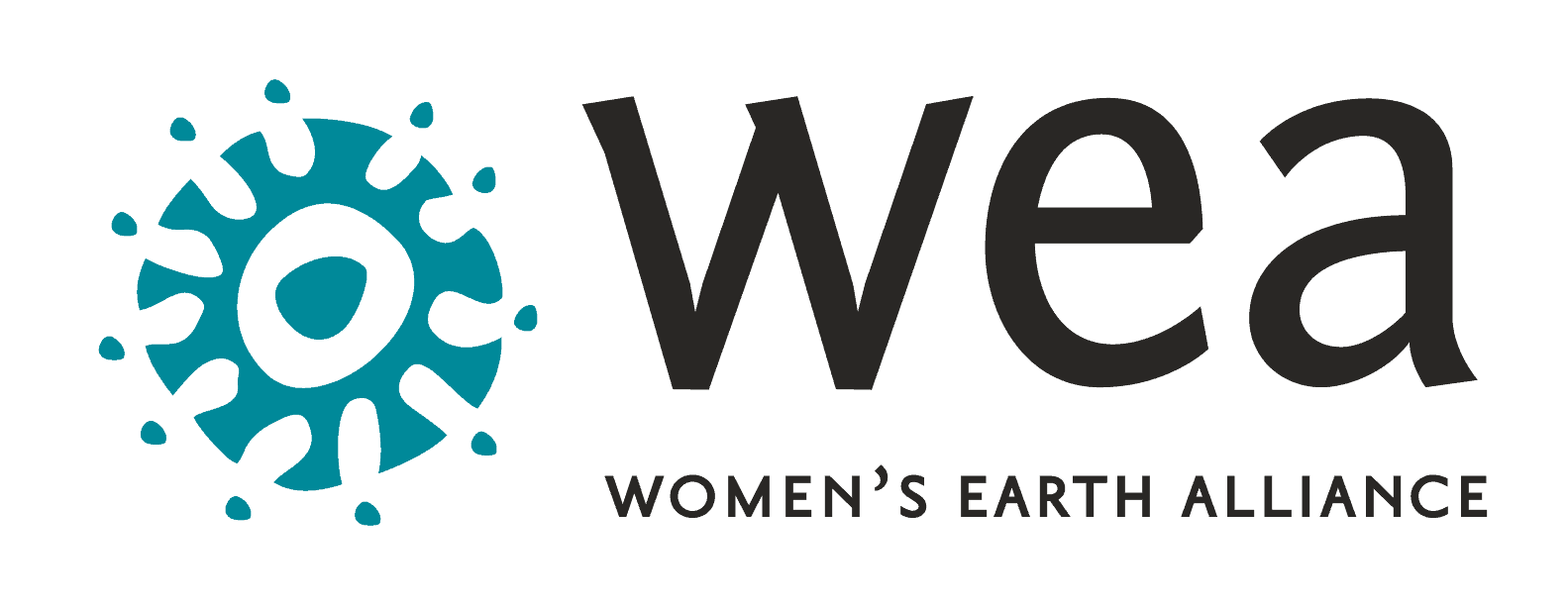women are on the frontlines.
As ecological crises intensify, women are the most vulnerable, facing daily threats to their health, security, nutrition, and earnings.
This is because for better or for worse, women are at the center of every one of these issues.
Food. Women produce most of the world’s food, yet own only a small percent of the world’s titled land.
Water. Women worldwide spend a combined total of 200 million hours per day collecting water, enduring sexual assault and violence and losing opportunities to gain education and employment.
Climate Change. Climate disasters and related political instability present women with life or death challenges. Because of poverty and lack of access to resources, women are 14 times more likely than men to die in a climate-related disaster.
Health. Women carry a disproportionate “body burden” of pesticides, pollutants and chemicals in our body fat, and can pass this toxicity on to our children in the womb.
Safety. The Center for Media and Democracy found that regions experiencing severe environmental destruction, like fracking or mining, show significant increases in rape, assaults, and other types violence against women.
Women have the solutions.
But what happens when these obstacles are removed? When women are accessing financial resources, training, leadership opportunities, when they can advocate for their land and their communities with knowledge and support, how does this change the equation? When their ideas are prioritized and their voices heard, what is the outcome?
These are the questions that have motivated WEA’s work since that original meeting of thirty. When women who are giving everything to protect our communities are supported, not only do we excel, but we help others to do the same. The children benefit, the communities benefit, natural resources and local economies can flourish, and real transformation can take root.
A small group of us had a hunch this would be the case, and we knew it wasn’t about meeting quotas for women’s representation. We knew we needed to design an initiative that had investing in women’s leadership as THE core strategy for achieving global environmental sustainability. We knew, because we saw it happening everywhere– that women’s empowerment creates the tipping point for ecological and social change. More than top-down decisions, more than development projects imposed from the outside, women’s community-based leadership is a key driver of lasting transformation for the critical issues we all care about and want to help solve.

And this is nothing new. Women are behind some of the most significant global movements for sustainability – from India’s Chipko movement, when hundreds of women rallied to protect Indigenous trees from being cut by hugging them, giving up their lives in protest; to Kenya’s Green Belt movement, where 50,000 women transformed the nation’s environment and economy with their treeplanting; to the thousands of brave women who led Bolivia’s “water wars” against water privatization.
Across cultures and throughout time, women work tirelessly to protect the earth and uphold the fabric of community for future generations.
There is no better investment.
From these frontlines, women are the best positioned to address the on-the-ground impacts. International agreements recognize the link between women’s access to resources and advancing economic prosperity, and evidence shows that an investment in women is the most effective environmental and social welfare investment there is.
Both the Sustainable Development Goals and the watershed research“Drawdown” conclude that empowering women and girls is one of the greatest leverage points for successfully addressing climate change and humanity’s resilience. When women’s knowledge is centered, and they can access needed resources, networks, and visibility, everyone benefits. Local economies prosper, democracy strengthens, health and education improve, and ecosystems vital to our survival regenerate.
This work is urgent.
Less than 7% of global philanthropic dollars are directed toward women. Traditional aid often fails women — by investing in external solutions (wells, food, etc.) with women as the “beneficiaries” rather than the core change agents. Evidence increasingly shows that this approach does not create sustainable change.
Women’s Earth Alliance answers a call for support from our combined networks of grassroots leaders poised to link regional solutions and coordinate change on a global scale. Their work is urgent: they are preserving indigenous seeds key to our survival; introducing clean cookstoves that save lives and reduce deforestation; modeling regenerative farming practices that will feed our planet; protecting our dwindling water sources; staving off destructive and toxic energy extraction; and shaping cultures of peace.


